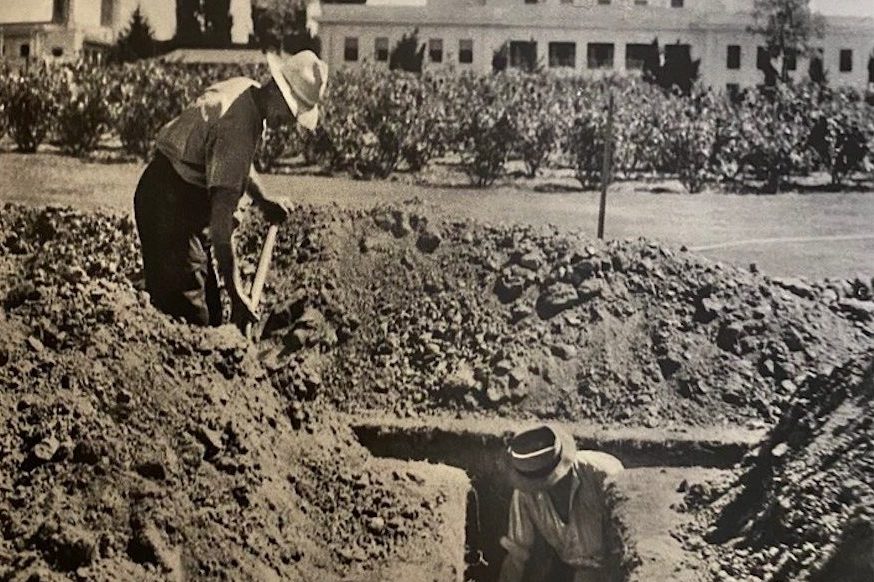
“Men and women of Australia… we are at war with Japan. This is the gravest hour of our history. We Australians have imperishable traditions. We shall maintain them. We shall vindicate them. We shall hold this country…”
Prime Minister John Curtin, December 8, 1941.
It was widely seen as a precursor to a national “invasion”: the bombing of Darwin on February 19, 1942, shocking the country with our “largest single attack ever mounted by a foreign power”.

It is often declared Australia’s equivalent of the devastating Japanese aerial attack on the American naval base at Pearl Harbor, Hawaii, 10 weeks earlier on December 7, 1941. That awoke a “sleeping giant”, drawing a reluctant US into World War II.
In the face of current global unrest and concerns of a lack of critical support for the Australian Defence Forces, the 82nd anniversary of the “Battle for Australia” makes for a timely reflection.
As sirens belatedly blared across the landscape, some 240 Japanese aircraft terrorised the defence-critical NT centre over two raids and more than three hours.
In excess of 680 bombs – some 220 more than in the US experience – “raining like hailstones”, wreaked havoc. Ships were sent to the bottom of the harbour, airfields and hospitals left as burnt-out wreckage and many of the unprepared populace fled, most never to return (though reports of widespread “panic” are another much-debated point).
With final figures of those killed contested – and many a theory on “government censorship” circulated – estimates range from the more accepted 250 to urban legends citing as many as 1000 casualties. Better agreed upon is that up to 400 people suffered injury.
As newspapers detailed, Aussies took a degree of comfort that our isolated island insulated us from a home-based war. However, part of the reasoning for the positioning of the nation’s capital – including being 222-kilometres distant from its port at Jervis Bay on the south coast – was to be far enough inland to offer a level of military protection.
In the wake of the dramatic events in the Top End, a 1942 newsreel solemnly pronounced to a national audience: “Now who will doubt that war has come to Australia?”
Over the course of more than a year, the idea that the security of the nation was perhaps more precarious than previously considered, grew ever more pronounced.
Darwin continued to be a focus as “a vital asset in Australia’s defences against an increasingly aggressive Japanese Empire”.
Well into 1943, it and the country’s mainland, extending to WA and Queensland, was subjected to at least 100 more air raids, causing operational damage, compounding paranoia and killing perhaps another 1700 more.
Then, on the evening of May 31, 1942, an underwater offensive began with three Japanese midget submarines silently gliding into our very centre: Sydney Harbour itself.
One was self-imploded, another crippled. A torpedo from “Midget A” sank the depot ship Kuttabul, killing 21 (it escaped, discovered in 2006 wrecked off the northern beaches).
HMAS Canberra, the first Australian warship fitted out with radar, was one of those present, recording she “may” have been fired upon.
Two short months on, HMAS Canberra was targeted by 19 Japanese torpedoes in the “Ironbottom Sound”. Struck by a stray, 84 died and the ship was scuttled.

Further crystallising fears, 1943 Anzac Day commemorations including at the new Australian War Memorial were curtailed due to a potential attack.
Evidence of the degree of alarm is also still to be found as far away as modern Canberra. In the backyards of long-standing homes such as Calthorpes House (1927) on Mugga Way, what might now be used as wine cellars were bomb shelters.
And in the rose garden of Parliament House, trenches were dug as “rumours and panic swept Canberra in the autumn of 1942”.
A “sweeping” inquiry had been implemented by the Curtin government shortly after the initial national trauma. Three years passed before it was presented to parliament by the new Prime Minister, Ben Chifley, following Curtin’s death in July, 1945.
Historian Peter Stanley in his 2008 book “Invading Australia” asserts the Labor leadership was by then aware the Japanese had “considered and rejected” the prospect of setting boots on these shores.
Curtin’s proclamation though, just after the “date which will live in infamy” as described by US President Roosevelt, had elevated underlying unease that was never effectively dispelled.
If, as Stanley holds, that keeping the “invasion myth” alive was about encouraging the public to continue to “work, fight and save”, 82 years on and given current challenging circumstances, would Australia be well served to heed the history of that rallying cry?
Nichole Overall is a social historian and journalist. She can be heard co-hosting the CityNews Sunday Roast program, 9am-noon, on 2CC.
Who can be trusted?
In a world of spin and confusion, there’s never been a more important time to support independent journalism in Canberra.
If you trust our work online and want to enforce the power of independent voices, I invite you to make a small contribution.
Every dollar of support is invested back into our journalism to help keep citynews.com.au strong and free.
Thank you,
Ian Meikle, editor




Leave a Reply